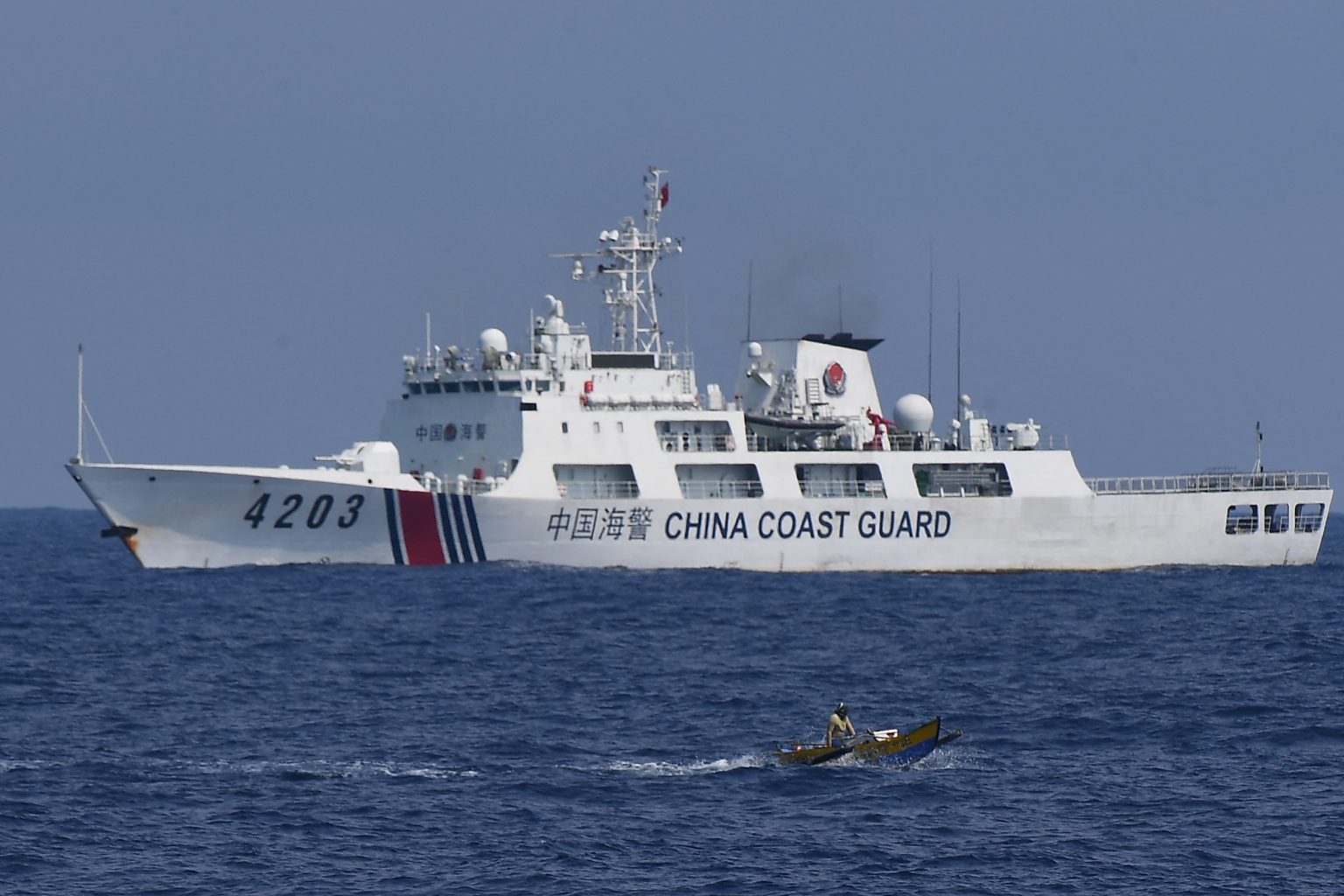China’s New Coast Guard Ships: Advanced Technology for South China Sea Operations
In a significant development for maritime security in the South China Sea, China appears to be building coast guard vessels with water-jet propulsion systems, representing a technological advancement that could alter the dynamics of territorial disputes in the region. This new ship design, spotted recently at shipyards in southern China, introduces capabilities that may enhance China’s already formidable maritime law enforcement presence in contested waters.
The China Coast Guard currently operates the world’s largest maritime law enforcement fleet, with more than 150 vessels exceeding 1,000 tons, including two massive 12,000-ton ships that dwarf other nations’ coast guard vessels. This naval power bolsters Beijing’s assertions of sovereignty over most of the South China Sea, claims based on what China describes as “historic rights” but which overlap significantly with territories claimed by neighboring countries. These competing claims have led to frequent standoffs and occasional physical confrontations, particularly with Philippine vessels. Just last month, a collision between a Chinese coast guard ship and a Philippine naval destroyer left the Chinese vessel with a crumpled bow, requiring repairs at a nearby base—an incident that highlights the tensions pervading the region.
According to naval analyst Alex Luck, who shared photos of a new Chinese coast guard vessel being outfitted at a Guangzhou shipyard, the water-jet propulsion system represents a first for China’s coast guard in a ship of this size. The technology offers distinct advantages over traditional propeller systems, particularly at speeds above 34 miles per hour, where water-jets provide more efficient propulsion. Perhaps more importantly, the system functions like vectored thrust, significantly enhancing maneuverability by allowing changes to the angle of thrust. This increased agility could potentially help Chinese vessels avoid collisions like the recent incident with the Philippine destroyer, while also enabling better performance in the shallow waters that characterize parts of the South China Sea, as water-jets don’t protrude below the hull like propellers and rudders do.
The vessel itself is substantial—described by Luck as a “corvette-sized offshore patrol vessel” measuring approximately 328 feet in length with a displacement between 1,500 and 2,000 tons. Armed with a main gun and capable of carrying helicopters, these ships represent a significant addition to China’s maritime enforcement capabilities. According to Luck’s social media posts, two separate Chinese shipyards are currently building this type of vessel, suggesting a commitment to introducing this technology across the coast guard fleet. However, the water-jet propulsion system does come with trade-offs: it’s less efficient at speeds below 23 miles per hour, requires more maintenance than traditional propulsion systems, and consumes more fuel during high-speed operations, making it less economical overall.
The Pentagon has noted the China Coast Guard’s “continued expansion and modernization” in its Chinese military power report, highlighting that “newer vessels are larger and more capable, enabling them to operate farther offshore and remain on station longer.” This assessment underscores the strategic importance of these developments, as enhanced range and endurance allow for more persistent presence in disputed waters, potentially strengthening China’s de facto control over contested areas. The addition of water-jet propulsion technology to newer vessels appears to be another step in this direction, providing specialized capabilities that could prove decisive in the complex maritime environment of the South China Sea.
Looking ahead, China will likely continue expanding and modernizing its coast guard fleet to maintain and enhance its presence in disputed waters. While it remains unclear what specific types of new ships might follow this water-jet propulsion model, the investment in this technology indicates China’s serious commitment to developing maritime enforcement capabilities tailored to the unique challenges of operating in the South China Sea. As neighboring countries also work to modernize their own maritime forces in response, the technological race to control these contested waters shows no signs of abating, with potential implications for regional stability and international maritime law enforcement in the years to come.















